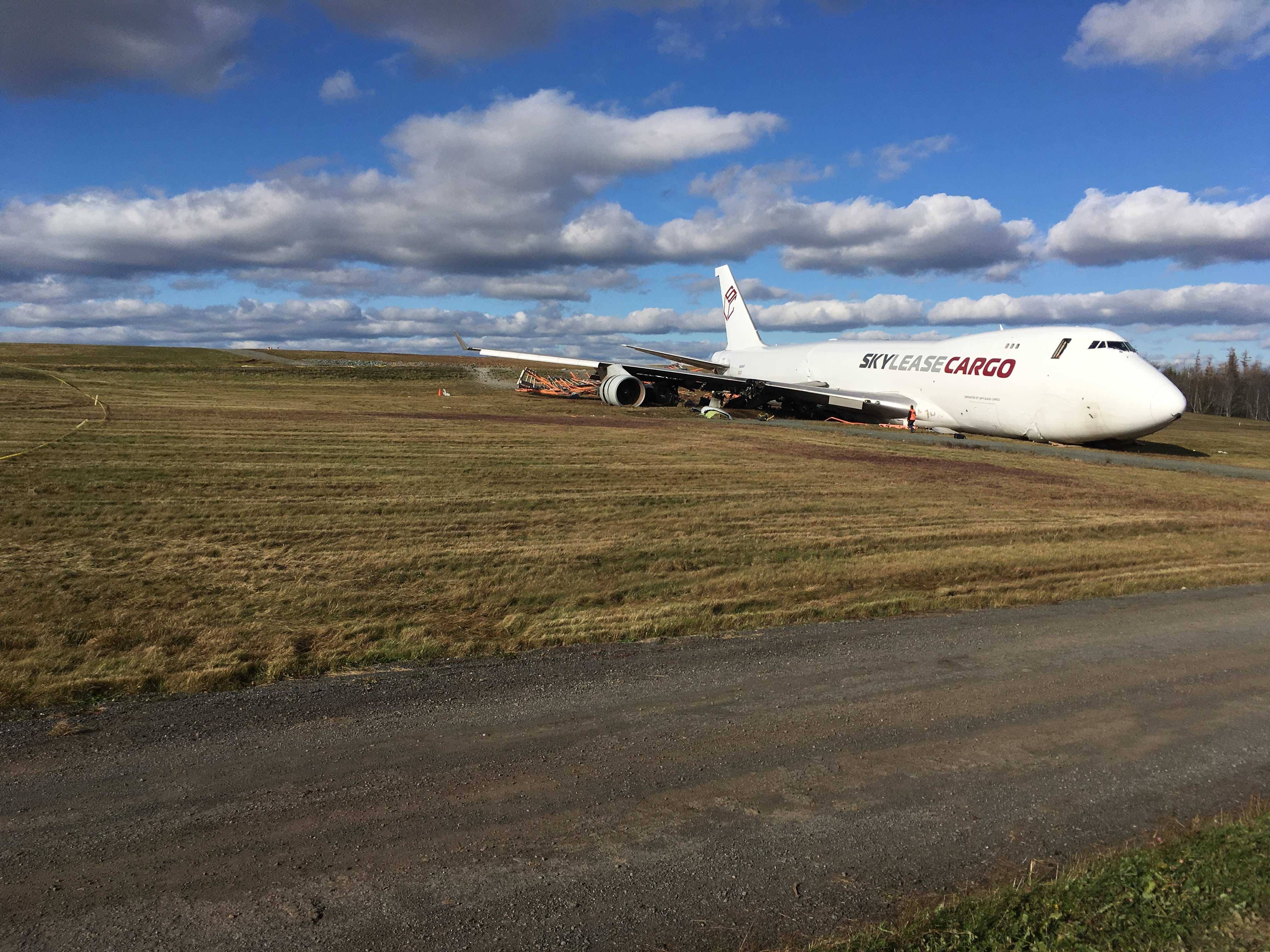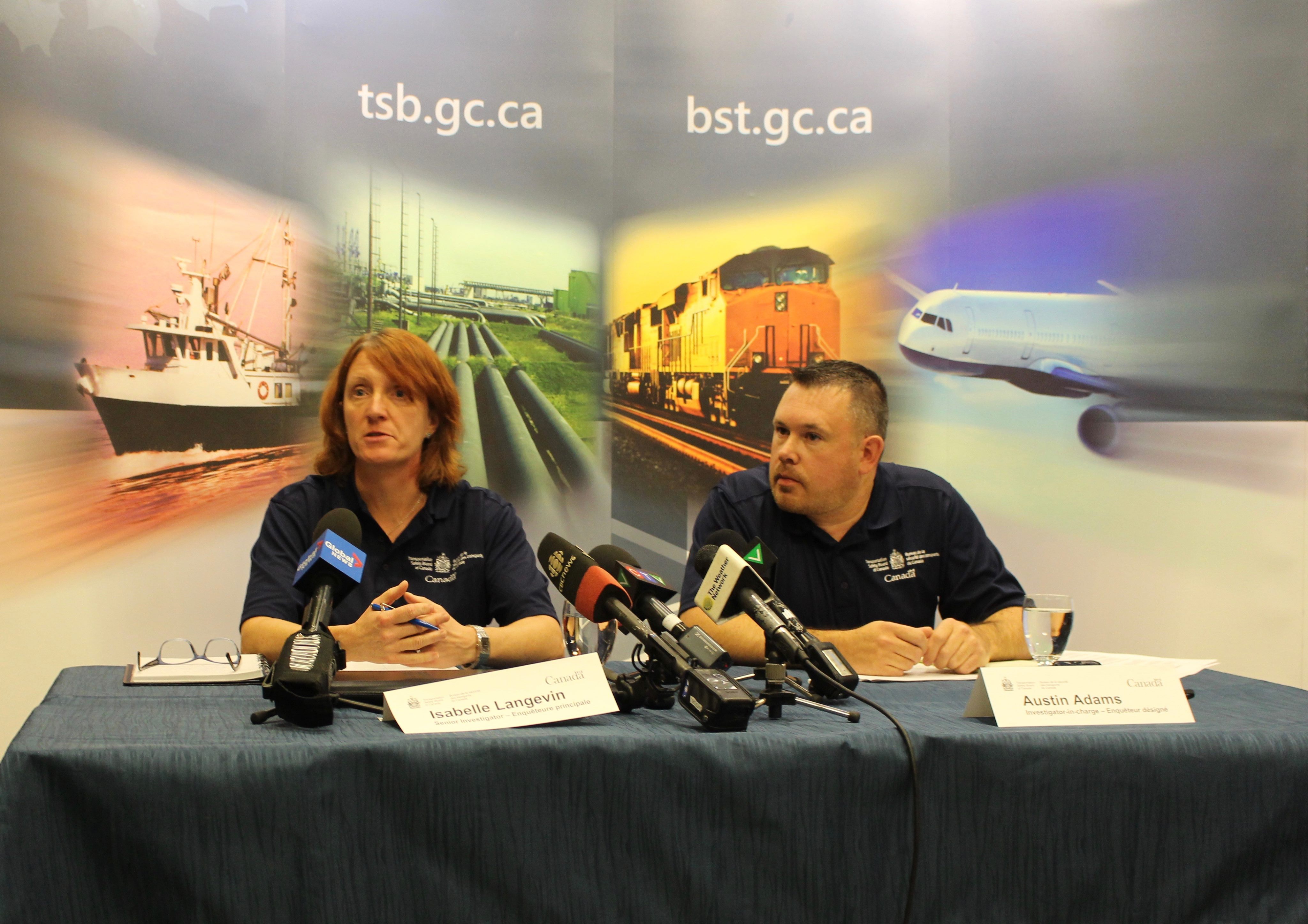Airport
Strong winds possible factor in cargo plane accident at Halifax airport
Cargo plane overran runway on Wednesday

caption
The plane landed off the end of a runway, close to Old Guysborough Road.Transportation Safety Board of Canada investigators have found windy landing conditions may have contributed to a plane overrunning the runway at the Halifax Stanfield International Airport.
At 5:05 a.m. on Wednesday, a Boeing 747-400, operated by SkyLease Cargo, overran a runway by 210 metres. The four crew members suffered minor injuries.
Ideally, a plane wants to land into the wind, said Austin Adams, the investigator in charge of the safety board’s inquiry. In this case, that didn’t happen.
Adams, speaking at a news conference on Thursday, said the plane landed in a strong westerly crosswind, blowing at about 33 kilometres per hour, as well as a tailwind. Average wind speeds for November are 17.5 kilometres per hour, according to Environment Canada. Related stories
The inquiry is also looking into other weather-related conditions. The runway was wet with rain when the plane approached, which could have also contributed to the accident.
“It is important that we don’t speculate or draw conclusions about causes of the occurrence,” Adams said.
During the landing, the plane hit a localizer antenna past the end of the runway, close to a fence that separates the airfield from Old Guysborough Road.
The plane’s landing gear collapsed and two engines tore off. The other two engines were “substantially damaged” and there was a small fuel leak, said Adams.
There was also a small impact fire, contrary to an earlier statement from the safety board.
The accident triggered flight cancellations and long security lineups into Thursday morning. Theresa Rath Spicer, spokesperson for the airport, said Friday morning that flights are now operating normally.
Shorter runway
Runway 14, where the accident happened, is shorter than the airfield’s main runway. Right now, investigators don’t know whether the twice-weekly flight between Halifax and Changsha, China, was scheduled to land there.
When landing, air traffic control usually determines which runway a plane should use. In this case, Adams said, “I believe it was the pilot’s request for that runway, however (that is) preliminary.”
Investigators will speak with crew members, and gather more data, before deciding whether landing on Runway 14 was the right decision.

caption
Isabelle Langevin and Austin Adams, investigators with the Transportation Safety Board of Canada, at Thursday’s news conference.Gathering information
Fifteen safety board investigators are working on the inquiry. They’re collecting and analyzing flight data from the cockpit voice recorder and other sources.
They’ve also been in contact with the plane’s operator, SkyLease Cargo; its manufacturer, Boeing and government agencies like Transport Canada and Nav Canada. A human factors specialist will look at fatigue and other variables that may have affected the crew’s decision-making process.
Adams couldn’t comment on whether the four crew members, taken to the hospital for treatment, have been released.
Runway safety
This is the third major incident the safety board has examined in Halifax over the past 15 years. No investigations have pointed to specific problems with the airfield.
Runway overruns are a watchlist issue for the Transportation Safety Board. Since 2013, there’s been an average of nine overrun accidents per year in Canada.
The board says runway end safety areas, or RESAs, help mitigate those accidents. A RESA is a prepared surface, not necessarily paved, past the end of a runway.
Transport Canada mandates 60 metres of space after a runway, with another 90 metres recommended, but standards are changing. The agency will soon require airports servicing over 325,000 passengers annually, like Halifax Stanfield, to have 150-metre RESAs.
Currently, Runway 14 has a safety area of 140 metres. Spicer said work is underway at the airport to build out all RESAs to the Transport Canada recommended length of 150 metres. Two safety areas already meet that standard, while the other two should be completed in 2019.
The plane will remain on a closed runway until the safety board is finished its field investigation.
“We want to take our time to make sure that we’ve covered everything,” Adams said.
After the investigation, the airport authority will be responsible for removing the damaged plane.

